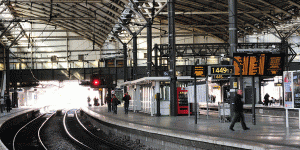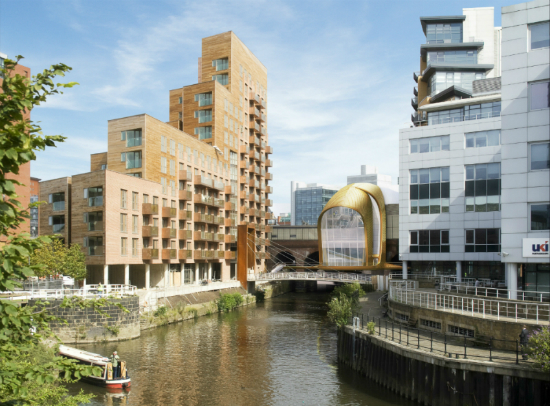 As work continues on the £17.3m project to create a new south entrance at Leeds Railway Station,a key feature of the West Yorkshire skyline is proof that HBPW has been playing its part in ensuring Network Rail’s scheme remains on schedule.
As work continues on the £17.3m project to create a new south entrance at Leeds Railway Station,a key feature of the West Yorkshire skyline is proof that HBPW has been playing its part in ensuring Network Rail’s scheme remains on schedule.
While tower cranes may be a normal feature of many construction sites, it is a rarity that they are positioned directly next to railway lines, something NR is always keen to avoid, where possible, in the interests of safety.
However, in order that the multi million pounds project, close to the Leeds’ landmark ‘Dark Arches’ in the Neville Street / Dark Neville Street area, can progress, such a structure has had to be erected adjacent to the main lines which run in and out of the city station.
HBPW’s Managing Partner, Paul Withers, said: “The engineering for the new entrance has been designed by Mott Macdonald. However, we were asked to carry out the Category 3 independent checks on Carillion’s design of the foundations to ensure that they were capable of supporting a tower crane. We also carried out the Category 3 checks on the Form F002 for the new permanent works.
“In simple terms Category 3 protocols provide for a double checking process in high risk safety environments. In this instance HBPW was the independent verifier but, in the past, some of our own design work has been subject to Category 3 overviewing by an independent third party.”
The new entrance will be a fully-accessible, enclosed pedestrian extension over the River Aire directly south of the station. Lifts, escalators and stairs will take passengers from areas south of the city such as Holbeck Urban Village to a widened footbridge, which will have customer information screens, ticket vending machines, CCTV, and cycle storage facilities, leading to a new ticket gate line above platforms 16 and 17.
To complement the scheme, the area around Little Neville Street will also be pedestrianised and landscaped and NR has submitted an application for improvements to arches and area around Dark Neville Street.
It is anticipated that approximately 20 per cent of passengers a day travelling into Leeds from across West Yorkshire and beyond will use the new southern entrance, relieving pressure on the existing entrances and providing shorter journeys for business and leisure passengers to the south of the city centre.
The new pedestrian entrance, expected to be used by around 20,000 people a day, will be a great benefit to people living and working south of the river, and will open up new travel opportunities providing a further stimulus to redevelopment and expansion of the city centre, and will support the continued regeneration of the southern quarter of the city.
Passenger numbers using the station are expected to rise by 16 per cent this year and by 62 per cent within 15 years.


